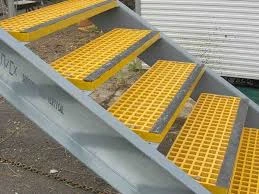
-
 Afrikaans
Afrikaans -
 Albanian
Albanian -
 Amharic
Amharic -
 Arabic
Arabic -
 Armenian
Armenian -
 Azerbaijani
Azerbaijani -
 Basque
Basque -
 Belarusian
Belarusian -
 Bengali
Bengali -
 Bosnian
Bosnian -
 Bulgarian
Bulgarian -
 Catalan
Catalan -
 Cebuano
Cebuano -
 China
China -
 China (Taiwan)
China (Taiwan) -
 Corsican
Corsican -
 Croatian
Croatian -
 Czech
Czech -
 Danish
Danish -
 Dutch
Dutch -
 English
English -
 Esperanto
Esperanto -
 Estonian
Estonian -
 Finnish
Finnish -
 French
French -
 Frisian
Frisian -
 Galician
Galician -
 Georgian
Georgian -
 German
German -
 Greek
Greek -
 Gujarati
Gujarati -
 Haitian Creole
Haitian Creole -
 hausa
hausa -
 hawaiian
hawaiian -
 Hebrew
Hebrew -
 Hindi
Hindi -
 Miao
Miao -
 Hungarian
Hungarian -
 Icelandic
Icelandic -
 igbo
igbo -
 Indonesian
Indonesian -
 irish
irish -
 Italian
Italian -
 Japanese
Japanese -
 Javanese
Javanese -
 Kannada
Kannada -
 kazakh
kazakh -
 Khmer
Khmer -
 Rwandese
Rwandese -
 Korean
Korean -
 Kurdish
Kurdish -
 Kyrgyz
Kyrgyz -
 Lao
Lao -
 Latin
Latin -
 Latvian
Latvian -
 Lithuanian
Lithuanian -
 Luxembourgish
Luxembourgish -
 Macedonian
Macedonian -
 Malgashi
Malgashi -
 Malay
Malay -
 Malayalam
Malayalam -
 Maltese
Maltese -
 Maori
Maori -
 Marathi
Marathi -
 Mongolian
Mongolian -
 Myanmar
Myanmar -
 Nepali
Nepali -
 Norwegian
Norwegian -
 Norwegian
Norwegian -
 Occitan
Occitan -
 Pashto
Pashto -
 Persian
Persian -
 Polish
Polish -
 Portuguese
Portuguese -
 Punjabi
Punjabi -
 Romanian
Romanian -
 Russian
Russian -
 Samoan
Samoan -
 Scottish Gaelic
Scottish Gaelic -
 Serbian
Serbian -
 Sesotho
Sesotho -
 Shona
Shona -
 Sindhi
Sindhi -
 Sinhala
Sinhala -
 Slovak
Slovak -
 Slovenian
Slovenian -
 Somali
Somali -
 Spanish
Spanish -
 Sundanese
Sundanese -
 Swahili
Swahili -
 Swedish
Swedish -
 Tagalog
Tagalog -
 Tajik
Tajik -
 Tamil
Tamil -
 Tatar
Tatar -
 Telugu
Telugu -
 Thai
Thai -
 Turkish
Turkish -
 Turkmen
Turkmen -
 Ukrainian
Ukrainian -
 Urdu
Urdu -
 Uighur
Uighur -
 Uzbek
Uzbek -
 Vietnamese
Vietnamese -
 Welsh
Welsh -
 Bantu
Bantu -
 Yiddish
Yiddish -
 Yoruba
Yoruba -
 Zulu
Zulu
extension of a threaded rod how to properly extend a ...
Extending a Threaded Rod A Comprehensive Guide
Threaded rods are essential components in various construction and engineering applications. They provide strong, reliable connections between parts and can be found in everything from machinery and automotive applications to construction and DIY projects. However, there may be instances where you find it necessary to extend a threaded rod to accommodate a specific requirement or to ensure a proper fit. This article will guide you through the proper methods to extend a threaded rod effectively.
Understanding the Basics
Before delving into the methods of extending a threaded rod, it's important to understand its structure. A threaded rod typically has a uniform diameter along its length, with threads running along its surface, allowing for easy fastening with nuts or other hardware. The material of the rod—usually steel, stainless steel, or other alloys—determines its strength and application suitability.
Methods to Extend a Threaded Rod
1. Using Threaded Couplers One of the most effective and straightforward methods for extending a threaded rod is by using a threaded coupler, also known as a coupling nut. This is a short piece of metal with internal threads on both ends. To extend your rod, simply screw the coupler onto the existing rod and then screw the new rod into the other end of the coupler. Ensure that both connections are tight for maximum strength.
2. Welding For applications requiring a permanent and robust extension, welding is a viable option. This method involves welding the new rod section to the existing threaded rod. It's essential to have the right equipment and skills for this method, as improper welding can weaken the connection, leading to failure under load. Always consider the heat treatment required for materials to maintain their properties after welding.
3. Using a Longer Rod In cases where an existing threaded rod is insufficiently long, it may be more practical to replace it with a longer rod altogether. This approach can prevent potential weaknesses at the joint and provide a robust solution for the application. Opt for a rod of appropriate length and diameter, matching the thread pitch to ensure compatibility with existing hardware.
extension of a threaded rod how to properly extend a ...

4. Thread Cutting If you have access to a lathe or threading tool, you can extend the threads on the end of the rod. This method involves cutting new threads onto the rod, allowing it to be coupled with another piece. It requires precision and skill, so it's recommended for those experienced in machining practices.
Precautions and Considerations
When extending a threaded rod, keep several precautions in mind
- Material Compatibility Ensure that the materials of the rods being joined are compatible. Using mismatched materials can lead to corrosion or reduced strength. - Thread Specifications Always match the thread pitch and diameter to avoid threading issues.
- Load Capacity Consider the load the extended rod will handle. If the extension compromises the rod's strength, it may lead to failure.
Conclusion
Extending a threaded rod correctly can enhance the functionality of your project and ensure safety and reliability in your connections. Whether you choose to use couplers, welding, or replace the rod entirely, adhering to proper techniques and safety standards is crucial. Always assess your specific needs and choose the method that best suits your project requirements. With the right approach, you can successfully extend a threaded rod and achieve the desired outcome in your construction or engineering endeavors.
Latest news
-
Exploring the Benefits of Top Hammer Drifter Rods for Enhanced Drilling PerformanceNewsJun.10,2025
-
High-Precision Fiberglass Winding Machine for GRP/FRP Pipe Production – Reliable & Efficient SolutionsNewsJun.10,2025
-
FRP Pipes & Fittings for Shipbuilding - Corrosion-Resistant & LightweightNewsJun.09,2025
-
Premium FRP Flooring Solutions Durable & Slip-ResistantNewsJun.09,2025
-
Premium Fiberglass Rectangular Tanks Durable & Lightweight SolutionNewsJun.09,2025
-
Tapered Drill String Design Guide Durable Performance & UsesNewsJun.09,2025









